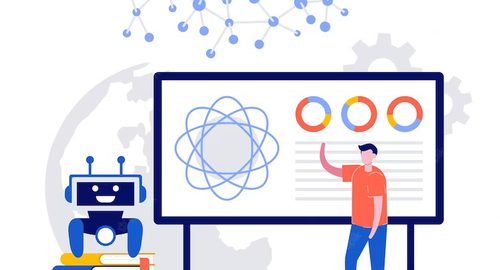In today’s fast-paced digital world, software testing has become an essential part of the software development life cycle. With the increasing complexity of software applications, traditional testing methods are no longer sufficient to ensure the quality of software products. This is where cognitive automation testing comes into play. In this blog, we will explore the integration of cognitive computing capabilities, such as natural language processing (NLP) and image recognition, into test automation frameworks to handle complex testing scenarios.
What is Cognitive Automation Testing?
Cognitive automation testing is a subset of test automation that leverages cognitive computing capabilities to handle complex testing scenarios. Cognitive computing is a type of artificial intelligence that mimics human thought processes. It involves the use of natural language processing (NLP), machine learning, and other advanced technologies to enable computers to understand and interpret human language and behavior.
Cognitive test automation uses these cognitive computing capabilities to automate testing scenarios that were previously difficult or impossible to automate using traditional testing methods. For example, cognitive test automation can be used to automate testing scenarios that involve natural language processing, image recognition, and other complex tasks.
Benefits of Cognitive Automation in Testing
Cognitive automation offers several benefits over traditional testing methods. Some of the key benefits include:
- Improved Test Coverage: Cognitive automation testing can handle complex testing scenarios that were previously difficult or impossible to automate using traditional testing methods. This improves test coverage and ensures that all aspects of the software application are thoroughly tested.
- Increased Efficiency: Cognitive test automation can automate repetitive and time-consuming testing tasks, freeing up testers to focus on more complex testing scenarios. This increases efficiency and reduces the time and cost of software testing.
- Improved Accuracy: Cognitive automation testing uses advanced technologies such as NLP and image recognition to ensure accurate and reliable testing results. This reduces the risk of human error and ensures that testing results are consistent and reliable.
- Faster Time-to-Market: Cognitive test automation can speed up the software development life cycle by automating testing tasks and reducing the time and cost of software testing. This enables organizations to bring software products to market faster and stay ahead of the competition.
Challenges of Cognitive Test Automation
While cognitive test automation offers several benefits, it also presents several challenges. Some of the key challenges include:
- Complexity: Cognitive test automation involves the integration of advanced technologies such as NLP and image recognition into test automation frameworks. This can be complex and requires specialized skills and expertise.
- Cost: Cognitive test automation requires specialized tools and technologies, which can be expensive to acquire and maintain. This can be a barrier to adoption for some organizations.
- Integration: Cognitive automation must be integrated with existing test automation frameworks and processes. This can be challenging and requires careful planning and execution.
- Data Quality: Cognitive test automation relies on high-quality data to ensure accurate and reliable testing results. This can be a challenge if the data is incomplete, inaccurate, or inconsistent.
Methodologies for Cognitive Test Automation
There are several methodologies for implementing cognitive test automation. Some of the key methodologies include:
- Scriptless Test Automation: Scriptless test automation involves the use of visual models and drag-and-drop interfaces to create test cases. This approach simplifies the test automation process and reduces the need for specialized skills and expertise.
- Model-Based Testing: Model-based testing involves the creation of models that represent the behavior of the software application. These models are then used to generate test cases automatically. This approach reduces the time and cost of test case creation and ensures comprehensive test coverage.
- Behavior-Driven Development (BDD): BDD involves the creation of test cases that are based on the behavior of the software application. This approach ensures that testing is aligned with the business requirements and improves the accuracy and relevance of testing results.
- Artificial Intelligence (AI) and Machine Learning (ML): AI and ML solutions can be used to automate testing tasks that involve natural language processing, image recognition, and other complex tasks. These technologies can also be used to analyze testing results and identify patterns and trends.
A prime example of AI-driven testing is showcased in our case study: AI-assisted testing for transport management, where Mindfire’s expertise streamlined quality assurance processes. By utilizing advanced AI techniques, the team enhanced testing efficiency, reduced manual intervention, and ensured faster, more accurate releases for the transport management system.
Natural Language Processing (NLP) in Test Automation
Natural Language Processing (NLP) is a subfield of artificial intelligence that focuses on the interaction between computers and humans using natural language. NLP can be used in test automation to automate testing tasks that involve natural language processing, such as testing chatbots and voice assistants.
NLP-based test automation involves the use of NLP algorithms to analyze and understand natural language inputs and outputs. This enables testers to create test cases that are based on natural language inputs and outputs, rather than code-based inputs and outputs.
Benefits of NLP-based Test Automation
NLP-based test automation offers several benefits over traditional testing methods. Some of the key benefits include:
- Improved Test Coverage: NLP-based test automation can handle complex testing scenarios that were previously difficult or impossible to automate using traditional testing methods. This improves test coverage and ensures that all aspects of the software application are thoroughly tested.
- Increased Efficiency: NLP-based test automation can automate repetitive and time-consuming testing tasks, freeing up testers to focus on more complex testing scenarios. This increases efficiency and reduces the time and cost of software testing.
- Improved Accuracy: NLP-based test automation uses advanced technologies such as NLP algorithms to ensure accurate and reliable testing results. This reduces the risk of human error and ensures that testing results are consistent and reliable.
- Faster Time-to-Market: NLP-based test automation can speed up the software development life cycle by automating testing tasks and reducing the time and cost of software testing. This enables organizations to bring software products to market faster and stay ahead of the competition.
Challenges of NLP-based Test Automation
While NLP-based test automation offers several benefits, it also presents several challenges. Some of the key challenges include:
- Complexity: NLP-based test automation involves the integration of NLP algorithms into test automation frameworks. This can be complex and requires specialized skills and expertise.
- Data Quality: NLP-based test automation relies on high-quality data to ensure accurate and reliable testing results. This can be a challenge if the data is incomplete, inaccurate, or inconsistent.
- Integration: NLP-based test automation must be integrated with existing test automation frameworks and processes. This can be challenging and requires careful planning and execution.
Image Recognition in Test Automation
Image recognition is a technology that enables computers to interpret and understand visual information, such as images and videos. Image recognition can be used in test automation to automate testing tasks that involve image recognition, such as testing user interfaces and web applications.
Image recognition-based test automation involves the use of image recognition algorithms to analyze and understand visual information. This enables testers to create test cases that are based on visual inputs and outputs, rather than code-based inputs and outputs.
Benefits of Image Recognition-based Test Automation
Image recognition-based test automation offers several benefits over traditional testing methods. Some of the key benefits include:
- Improved Test Coverage: Image recognition-based test automation can handle complex testing scenarios that were previously difficult or impossible to automate using traditional testing methods. This improves test coverage and ensures that all aspects of the software application are thoroughly tested.
- Increased Efficiency: Image recognition-based test automation can automate repetitive and time-consuming testing tasks, freeing up testers to focus on more complex testing scenarios. This increases efficiency and reduces the time and cost of software testing.
- Improved Accuracy: Image recognition-based test automation uses advanced technologies such as image recognition algorithms to ensure accurate and reliable testing results. This reduces the risk of human error and ensures that testing results are consistent and reliable.
- Faster Time-to-Market: Image recognition-based test automation can speed up the software development life cycle by automating testing tasks and reducing the time and cost of software testing. This enables organizations to bring software products to market faster and stay ahead of the competition.
Challenges of Image Recognition-based Test Automation
While image recognition-based test automation offers several benefits, it also presents several challenges. Some of the key challenges include:
- Complexity: Image recognition-based test automation involves the integration of image recognition algorithms into test automation frameworks. This can be complex and requires specialized skills and expertise.
- Data Quality: Image recognition-based test automation relies on high-quality visual data to ensure accurate and reliable testing results. This can be a challenge if the data is incomplete, inaccurate, or inconsistent.
- Integration: Image recognition-based test automation must be integrated with existing test automation frameworks and processes. This can be challenging and requires careful planning and execution.
Conclusion
Cognitive automation testing, NLP-based test automation, and image recognition-based test automation are powerful tools for handling complex testing scenarios in today’s fast-paced digital world. By leveraging cognitive computing capabilities such as NLP and image recognition, organizations can improve test coverage, increase efficiency, improve accuracy, and reduce the time and cost of software testing. While these approaches present several challenges, there are several methodologies and technologies available to help organizations overcome these challenges and reap the benefits of cognitive test automation.
As cognitive test automation evolves to meet the demands of increasingly complex software ecosystems, organizations require not only advanced tools but also expert-driven strategies to implement them effectively. Mindfire’s Automation Testing Services are designed to meet this need, leveraging deep domain expertise, intelligent automation frameworks, and tailored testing methodologies to ensure superior software quality, faster release cycles, and reduced risk.


